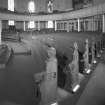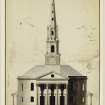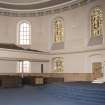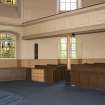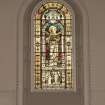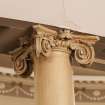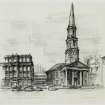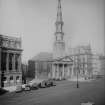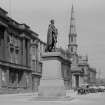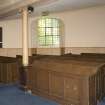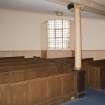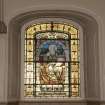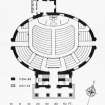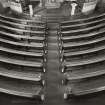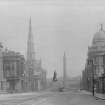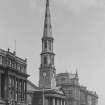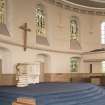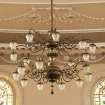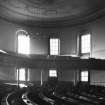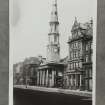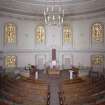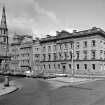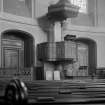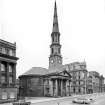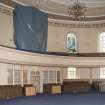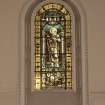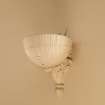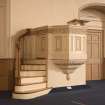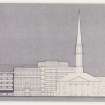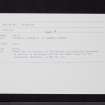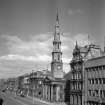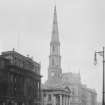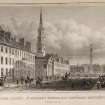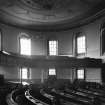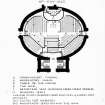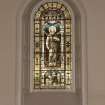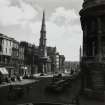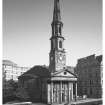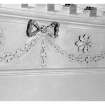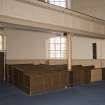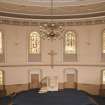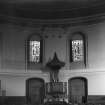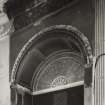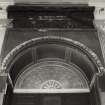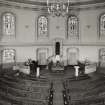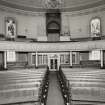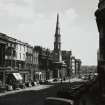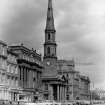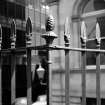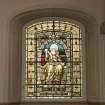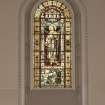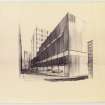Edinburgh, George Street, St Andrew's And St George's Church
Church (18th Century)
Site Name Edinburgh, George Street, St Andrew's And St George's Church
Classification Church (18th Century)
Canmore ID 52433
Site Number NT27SE 387
NGR NT 25425 74101
Datum OSGB36 - NGR
Permalink http://canmore.org.uk/site/52433
- Council Edinburgh, City Of
- Parish Edinburgh (Edinburgh, City Of)
- Former Region Lothian
- Former District City Of Edinburgh
- Former County Midlothian
NT27SE 387 25425 74101
Architects: Major Andrew Fraser; Alexander Stevens - contract for building church 1786; Robert Kay - submitted design for a square church 1781; William Sibbald - spire
NMRS Print Room
George Street, Church of St Andrew and St George
3 prints - view of the spire
W Schomberg Scott Photograph Collection
Acc No 1997/39
Publication Account (1951)
123. St. Andrew's Church, George Street.
…[James] Craig, in planning the New Town, proposed to end the E. vista of George Street in St. Andrew's Church, which was to stand in the centre of the E. side of St. Andrew Square. That site, however, was pre-empted by Sir Laurence Dundas in 1772 (cf. No. 127 [St Andrew Square]); accordingly when the church came to be built by "Major Fraser of the Engineers" (1) it was placed on a site on the N. side of George Street midway between St. David Street and Hanover Street. Although 1785 is given in most works of reference as the year in which it was built, it is represented on Ainslie's map of 1780, with the Physicians' Hall directly opposite on the site now occupied by the Commercial Bank of Scotland.
Standing in a small court set back from the street, the church consists of an elliptical body behind a portico, the latter surmounted by a graceful tower and spire in the manner of James Gibbs, the Aberdonian architect who practised so successfully south of the Border during the first half of the 18th century. The portico, of polished ashlar, is tetrastyle with Composite columns supporting a triangular pediment with an oculus in the tympanum. At the back of the portico is a tall central doorway with a curvilinear pediment surmounted by a window. Both openings are flanked by blind windows, framed within pilasters in antis to the columns, the lower ones having triangular pediments. The tower, also of polished ashlar, is in three storeys, and changes plan at each level, the lowest part being rectangular, the central one octagonal, the uppermost one circular. The two upper tiers are ordered, Doric below and Ionic above. The bell chamber contains a chime of eight bells provided in 1789. The graceful spire, which rises to a height of 168 ft., is said to be an addition. Apparently a competition was held for its design and this was won by a Mr. McLeish, who was rewarded with the freedom of the City and a premium of sixty guineas. Mr. McLeish's design was carried out, with some alterations, by Major Fraser in 1787.
In contrast to the portico and tower the body of the church, which rests on an undercroft, is very plain and is carried out in droved ashlar. The principal axis runs E. and W. At either end is a lofty doorway with a triangular pediment. There are two tiers of plain windows, those of the lower tier having segmental heads and those of the upper semicircular ones. The roof is slated. The portico opens into a vestibule, which gives direct access into the church and has at each side a stair leading to the gallery. The interior was remodelled in 1862. On the N. is the pulpit, which originally had stairs at each side. Opposite this is the gallery sweeping round from N.W. to N.E. The plaster ceiling is enriched in a late version of the Adam style.
RCAHMS 1951, visited c.1941
(1) Transactions of the Edinburgh Architectural Association, ii, p. 220.
Build (1952)
Pen and Ink wash in Elevation at Scale of One Inch Equals One Foot. New Pulpit In Saint Andrews Parish Church, Edinburgh.



























































